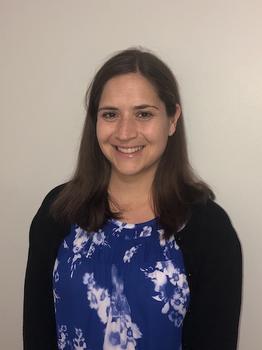In This Story
While working on their master’s degrees in social work at George Mason University, College of Public Health alumni Kendall Barrett, Madeline Holden, and Harveen Pantleay took part in field research on ageism in health care and are now using those skills in their careers.
They are also co-authors on the paper “’Don’t treat us like fragile babies:’ Mentors’ perspectives of an intergenerational mentoring program for medical students,” which was published online in the Journal of Intergenerational Relationships in February 2024.
George Mason University is a leader in graduating workforce-ready students, and its College of Public Health—the first in Virginia—is dedicated to helping meet the critical need for health workers in Virginia.

The three, working under the guidance of Emily Ihara, professor and chair of the Department of Social Work, and co-PI of George Mason’s Geriatrics Workforce Enhancement Program, studied the effects of ageism in health care and how both education and intergenerational contact can decrease this form of discrimination. As the students learned, the research improves empathy and understanding from both younger and older individuals within the health care system.
For the study, the students went to assisted living facilities to interview residents using open-ended questions and took detailed notes.
“This was a very important research project to me because there was a lot of focus on alternative and creative ways to support older people, which is a particular interest of mine,” said Barrett, MSW ’22, who was paired with Ihara as a student research assistant at George Mason’s Social Work integrated Research Lab (SWiRL).
“It was very interactive, and we were trying to show that we heard them and that their contribution was important,” said Barrett, who is now works as a psychotherapist with people of all ages.

“I was really nervous in the beginning because we were going into somebody's private space and didn't always know what [to expect], but it ended up being a wonderful experience and great for my own personal growth about sitting with things that can be uncomfortable,” said Barrett.
Both the George Mason students and the older adults benefitted from the Senior Mentor Program approach, and Ihara said the college hopes to expand it to other health professional students.
“One of the biggest things that I took away from my time in George Mason’s social work program was seeing people as individuals before you see whatever their struggle is,” said Barrett.
Pantleay, MSW ’22, also worked alongside Barrett and Ihara in SWiRL and was involved in many projects specifically focusing on gerontology.
“I gained a lot of valuable knowledge about qualitative data and how to classify that data into categories [through] analyzing the data and identifying what codes would be associated with the responses that were given by the mentors and participants,” said Pantleay.
Pantleay’s favorite part about the research project was learning about gerontology as it was a part of social work that she did not have much experience in at the time, she said.

“A lot of what I learned through the work and research in SWiRL wasn't covered in my classes necessarily, so this experience allowed me to learn a lot more about this community and the negative effects of ageism in health care,” said Holden, MSW ’22.
“I think the main takeaway from the research is that people make a lot of assumptions about older adults that they shouldn’t,” said Holden, who also conducted clinical research for Inova Hospital for three years before enrolling for her master’s of social work at George Mason.
Holden said now uses her experience from this project in her work at an affordable housing corporation. “I work with all ages, including seniors, providing wraparound services to them. The empathy and understanding the team had for their participants throughout this project was great practice for that.”
